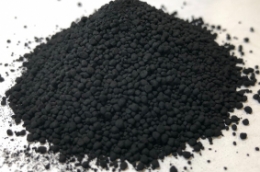Major Packaging Users Seek Ways to Cut Resource Consumption
15/07/2014
- Denmark

Danish brewing multinational Carlsberg has embarked on a major private sector initiative, involving many of its main suppliers, on the upcycling of beer cans, bottles and other packaging.
Upcycling is the conversion of used materials into materials of equivalent or better quality. The Carlsberg initiative, the Carlsberg Circular Community, will address the need for greater resource efficiency and reuse in its packaging by seeking Cradle-to-Cradle (C2C) certification for its products. C2C is the continual improvement programme under which products are manufactured according to the principles that waste should always be an input to a new product cycle, and that products should be made using renewable energy.
By 2016, Carlsberg wants to obtain three C2C product certifications. The Carlsberg Circular Community was established in early 2014 involving six major suppliers of cans, glass bottle coatings, glass, card and plastics to Carlsberg. According to the Environmental Protection Encouragement Agency (EPEA), founded by the originator of the C2C concept, Prof. Dr. Michael Braungart, the initiative will be one of the largest packaging supplier consortiums, with the companies involved generating annual revenues of more than €30 billion. Carlsberg wants to expand the community to 15 suppliers, also by 2016.
One issue for the company and its suppliers is to scrutinise Carlsberg beer bottles and cans and identify any chemicals or additives that could make the packaging hard to recycle, or that would reduce its quality and value. This assessment will be part of the C2C product analysis. The company sells 120 million hectolitres of beer per year, giving an indication of the scale of its demand for bottles and cans, and the savings that could therefore be achieved through greater efficiencies.
Other major companies are also increasingly taking initiatives to innovate in packaging in order to reduce or eliminate waste. Another trend is the “lightweighting” of packaging - reducing to a minimum the amount of raw material in a bottle or can. Coca Cola in early 2014 reduced the weight of its 330 millilitre glass Coca-Cola bottle to 190 grammes - the first time below 200 grammes. In 2005, the bottle weighed 240 grammes, meaning that Coca Cola has been able to reduce glass consumption by more than a fifth without sacrificing the bottle's quality and durability. The benefits of lightweighting are felt not only in terms of reduced materials use, but also through reduced emissions and fuel consumption related to the transporting of lighter products.
More information
-
Shared Link : http://ec.europa.eu/environment/ecoap/about-eco-innovation/good-practices/denmark/major-packaging-users-seek-ways-to-cut-resource-consumption_en.htm

 正體中文
正體中文



